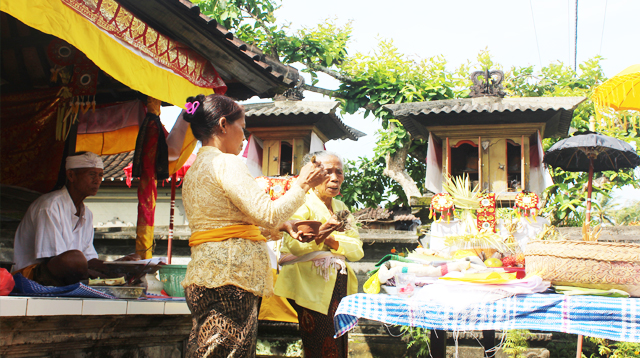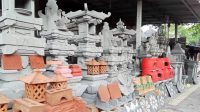- TEMPLE festival is not only a moment to pay homage but also a moment to have renunion with other family members and relatives.
- This temple festival is celebrated merrily and many cultural attraction can be seen. Please consult to your tour guide or pecalang (customary guard) about what dos and dont’s for your convenience.
Piodalan or temple festival is the anniversary celebration of the inauguration ceremony of a Hindu temple in Bali in particular, and Indonesia in general. In this celebration, people worship the Creator. This festival is also a good opportunity for fellow believers to have reunion.
The temple festival falls on the same day as the inauguration ceremony. Hindus usually choose based on pawukon (210 days) or sasih or month (1 Christian calendar year).
Type of Temple
The Hindu community has various types of temples. At the family level, there is a merajan temple. Several families who have the same ancestral origin are joined in one clan or soroh and have a dadia temple or kawitan temple where they worship manifestations of God and their ancestral souls who have been cremated.
At the village level, they have a tri kahyangan temple (puseh, desa and dalem temples) where they worship Lord Brahma, Lord Vishnu and Lord Shiva).
In addition, they also have temples based on professions such as Melanting Temple (traders), Segara Temple (fishermen), Bedugul Temple (farmers) and others. For universal temples, there are kahyangan jagat, dang kahyangan temple (glorifying saints in the past) and several other temples.
With a variety of numbers as mentioned above, on the Island of the Gods alone there are more than one thousand temples. Maybe this condition this island got the nickname as the Island of One Thousand Temples.
Decor
Various kinds of decorations installed make the atmosphere of the temple lively like in heaven. All the shrines are embellished with sacred ornaments full of philosophical meaning such as hainging cloth with prada motifs or puppet-themed ornaments, there are banners, umbrellas, weapons of the devata nawa sanga or nine gods in charge in the nine points of the compass around the shrines.
Additionally on the left and right of the entrance, there are penjors. Each penjor is made from bamboo pole with young coconut or plam leaf, festoon and other decoration as well as bamboo platfom to up offerings.
Art series
In the piodalan of clan temple and larger temples, a series of sacred arts accompany the ceremony as a complement. There is a Pendet Dance as a welcome to the gods or batharas, wargasari psalmody, the sound of a kulkul (wooden split bell), live gamelan or using a sound system as well as the Rejang Dewa dance.
After the piodalan procession is over, the people are given the opportunity to offer puja (mabahkti). If the number of devotees exceeds the capacity of the place, the puja will be divided into several sessions. All people perform the puja in an orderly and solemn manner. After performing the prayer led by a local temple priest, all people get a splash of holy water and drink it as well as bija (white or yellow rice) to be placed on the forehead and neck and eat a little as a symbol of God’s grace in the offering.











